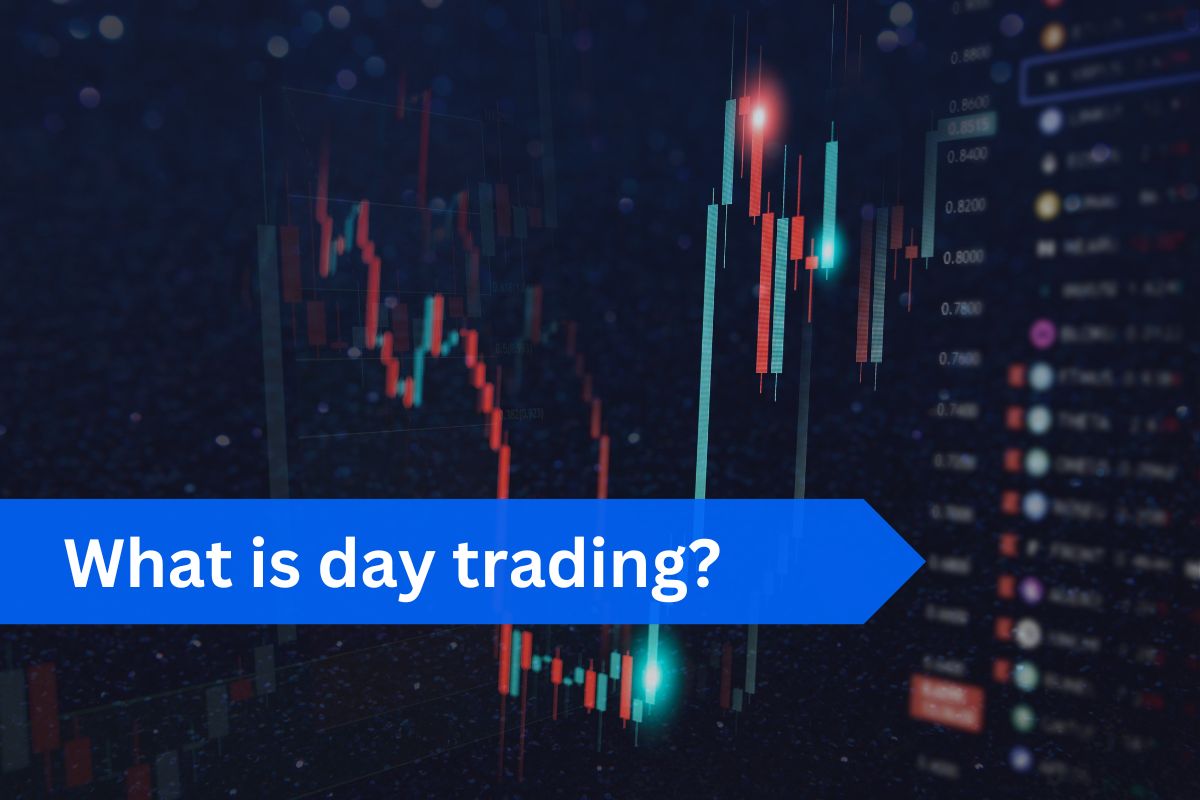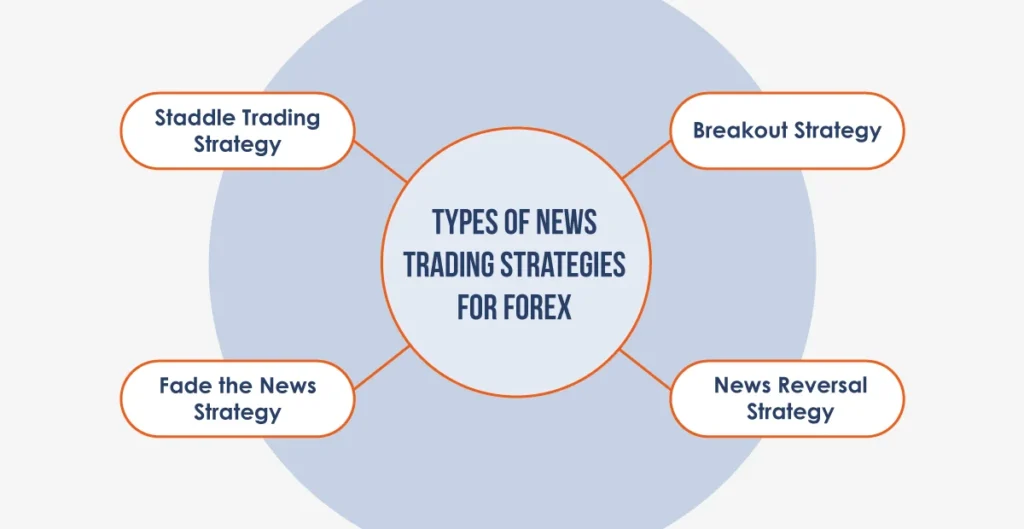Did you know that a single tweet can cause a stock to jump or plummet faster than a cat chasing a laser pointer? In the world of trading, news events play a crucial role, especially in reversal strategies. This article delves into how various news events impact reversal trading, highlighting key influences such as economic indicators and market sentiment. You'll learn how to prepare for market reactions, identify significant news events, and manage risks associated with trading reversals during high-volatility periods. Additionally, we explore the relationship between different asset classes and news, along with strategies to leverage historical data and technical analysis for more informed trading decisions. Join us as we navigate the complex interplay between news and reversal trading with insights from DayTradingBusiness.
How Do News Events Impact Reversal Trading Strategies?
News events can dramatically impact reversal trading strategies by causing sudden price movements and volatility. Positive or negative news can trigger sharp reversals, creating opportunities for traders to enter positions. For example, strong earnings reports may lead to a price spike, followed by a correction as traders take profits. Conversely, negative news can cause a drop, but a subsequent rebound might signal a reversal opportunity. Traders need to be vigilant about news releases, as they can invalidate existing setups or provide new entry points. Effective risk management becomes crucial during these times to account for increased volatility.
What Types of News Events Influence Reversal Trades?
Reversal trades are influenced by several types of news events:
1. Earnings Reports: Positive or negative earnings surprises can lead to quick price corrections, triggering reversal opportunities.
2. Economic Indicators: Reports like GDP, unemployment rates, and inflation data can cause sharp market reactions, leading to reversals.
3. Mergers and Acquisitions: Announcements of M&A can shift market sentiment, often resulting in a reversal of stock prices.
4. Regulatory Changes: News about new regulations can disrupt markets, prompting traders to anticipate reversals in affected sectors.
5. Geopolitical Events: Political instability or major global events can create volatility, leading to potential reversals in stock trends.
6. Market Sentiment News: Analyst upgrades, downgrades, and market sentiment shifts can lead traders to expect reversals.
These events create volatility and market mispricings, which are essential for identifying reversal trading opportunities.
How Can Traders Prepare for Market Reactions to News?
Traders can prepare for market reactions to news by following these steps:
1. Stay Informed: Regularly check economic calendars for upcoming news events that may impact the markets.
2. Analyze Previous Reactions: Review historical price movements following similar news releases to identify patterns.
3. Set Alerts: Use trading platforms to set alerts for key news events, ensuring you’re ready to react in real-time.
4. Develop a Plan: Establish clear entry and exit points based on potential market reactions to news, aligning with reversal trading strategies.
5. Practice Risk Management: Use stop-loss orders and position sizing to protect against unexpected volatility after news announcements.
6. Monitor Sentiment: Follow market sentiment indicators and social media to gauge trader reactions to news, which can influence price movements.
7. Be Flexible: Adapt your strategy based on the news impact; sometimes, unexpected reactions can create reversal opportunities.
By implementing these strategies, traders can effectively navigate market reactions to news, enhancing their reversal trading approach.
What Is the Relationship Between Volatility and News Releases?
Volatility often spikes around news releases because these events can dramatically shift market sentiment and expectations. For reversal trading strategies, this means increased risk and opportunity. Traders may see rapid price movements as the market reacts to news, leading to potential reversals. Successful traders monitor economic indicators, earnings reports, or geopolitical events to capitalize on this volatility, entering positions when they anticipate a price correction after the initial reaction. Understanding this relationship helps traders refine their strategies and manage risk effectively.
How Do Economic Indicators Affect Reversal Trading?
Economic indicators significantly influence reversal trading by impacting market sentiment and price movements. Traders monitor indicators like GDP, unemployment rates, and inflation reports. Positive data may lead to bullish sentiment, while negative data can trigger bearish reversals. For instance, if a country reports lower unemployment unexpectedly, traders might anticipate a market rally, prompting reversal trades on oversold assets. Conversely, disappointing economic growth can cause traders to exit long positions, leading to sharp price corrections. Understanding these indicators helps traders time their entries and exits more effectively, enhancing the success of their reversal strategies.
What Role Does Market Sentiment Play in Reversal Strategies?

Market sentiment significantly influences reversal strategies by shaping traders' perceptions and reactions to news events. Positive news can lead to overbought conditions, while negative news can create oversold scenarios. Traders often look for signs of exhaustion in these trends, using indicators and price action to identify potential reversals. For instance, after a negative earnings report, if prices drop sharply but begin to stabilize, the sentiment shift may signal a buying opportunity. Thus, understanding market sentiment is crucial for effectively timing reversals in trading strategies.
How Can Traders Identify Key News Events for Reversal Trading?
Traders can identify key news events for reversal trading by following an economic calendar, which highlights important releases like GDP, employment data, and central bank announcements. Monitor market sentiment through financial news, social media, and forums to gauge trader reactions. Look for volatility spikes around these events to spot potential reversals. Additionally, use technical analysis to identify support and resistance levels that coincide with news releases. Finally, track historical price movements after similar news events to anticipate possible reversals.
What Are the Risks of Trading Reversals During Major News?
Trading reversals during major news events carries significant risks. First, volatility can spike, leading to unpredictable price swings that may trigger stop-loss orders. Second, spreads often widen, increasing trading costs and slippage. Third, the market may react irrationally, causing reversals to fail despite sound technical analysis. Lastly, news can create abrupt shifts in sentiment, making it hard to gauge true market direction. Always weigh these risks before executing reversal trades around major news.
How Do Different Asset Classes Respond to News Events?
Different asset classes respond uniquely to news events. Equities often react sharply, with stock prices rising or falling based on earnings reports or economic data. Bonds may show more muted responses; however, interest rate news can lead to significant price adjustments. Commodities, like oil and gold, often spike in reaction to geopolitical events or supply disruptions. Forex markets can be highly volatile, responding swiftly to economic indicators or central bank announcements. Understanding these dynamics is crucial for reversal trading strategies, as the timing and type of news can dictate entry and exit points effectively.
How Do News Events Influence Day Trading Reversal Strategies?

News events significantly impact reversal trading strategies by causing volatility and price shifts. Traders often adjust their positions based on news releases, leading to quick reversals. Monitoring economic reports, earnings announcements, and geopolitical events is crucial for timing entries and exits in reversal trading.
Learn more about: Understanding Day Trading Reversal Strategies
Learn about How Do Institutional Traders Influence Day Trading Strategies?
What Strategies Can Mitigate Risks from News-Driven Volatility?
To mitigate risks from news-driven volatility in reversal trading strategies, consider these strategies:
1. Set Tight Stop-Loss Orders: Protect your capital by placing stop-loss orders close to your entry points to limit losses during unexpected news events.
2. Use News Calendars: Stay informed about upcoming economic reports and events that could impact the market, allowing you to adjust your positions accordingly.
3. Limit Position Sizes: Reduce your exposure by taking smaller positions, which can help manage risk when volatility spikes.
4. Implement a Wait-and-See Approach: Avoid trading immediately after significant news. Wait for the market to stabilize before entering positions.
5. Diversify Your Trades: Spread your risk across different assets or markets. This can cushion the impact of adverse news on any single position.
6. Employ Technical Indicators: Use indicators like Bollinger Bands or RSI to gauge market conditions and identify potential reversal points, helping you time your entries better.
7. Stay Disciplined: Stick to your trading plan and avoid emotional reactions to news. Consistency is key in managing risk.
Using these strategies can help you navigate the challenges posed by news-driven volatility while executing reversal trading strategies effectively.
How Can Historical News Data Enhance Reversal Trading Decisions?
Historical news data can enhance reversal trading decisions by providing insights into how specific events influenced market movements in the past. Analyzing past news reactions helps identify patterns and potential reversal points. For example, if a particular earnings report historically led to a price drop followed by a rebound, traders can anticipate similar outcomes in the future. Additionally, understanding the sentiment behind news articles can help gauge market psychology, allowing traders to make more informed decisions. By integrating this data, traders can refine their entry and exit strategies, increasing the likelihood of successful reversals.
Learn about How to Analyze Historical Data Using Day Trading Charts
What Tools Can Help Analyze News Impact on Reversal Strategies?

Tools that can help analyze news impact on reversal strategies include:
1. Sentiment Analysis Software: Tools like MarketPsych or RavenPack analyze news sentiment to gauge market reactions.
2. Economic Calendars: Platforms such as Forex Factory or Investing.com provide schedules of news events and their historical impact on markets.
3. Technical Analysis Platforms: TradingView or MetaTrader offer charting tools to visualize price movements post-news events.
4. Backtesting Software: Tools like Amibroker or QuantConnect allow you to test how reversal strategies would have performed during specific news events.
5. News Aggregators: Services like Feedly or Google News collect news articles and alerts, helping traders stay informed on relevant events.
Using these tools can enhance your understanding of how news affects reversal trading strategies.
How Does Timing Affect Reversal Trading Around News Releases?
Timing is crucial in reversal trading around news releases. Traders often see significant volatility immediately after news breaks, which can lead to sharp price movements. If you enter a reversal trade too early, you risk getting caught in the initial spike or drop. Conversely, waiting too long can mean missing the optimal entry point as the market stabilizes.
Ideally, traders should monitor the initial market reaction, looking for signs of overextension, such as extreme price movements or rapid retracements. This often occurs within minutes of the news. The most effective reversal trades tend to happen shortly after the news impact, as traders reassess the information and positions start to shift. Timing your entry a few minutes post-release can help capitalize on these adjustments while avoiding the initial chaos.
How Can Traders Use Technical Analysis Post-News Events?
Traders can use technical analysis post-news events by looking for price patterns and indicators that signal potential reversals. After significant news, prices often react sharply, creating volatility. Traders should monitor key support and resistance levels to identify entry and exit points.
Using tools like moving averages can help spot trends, while oscillators such as the RSI can indicate overbought or oversold conditions. Candlestick patterns formed after news events can reveal market sentiment shifts.
Additionally, watch for volume spikes; increased trading volume can confirm potential reversals. Combining these techniques with a solid risk management plan enhances the effectiveness of reversal trading strategies.
Learn about How Do Institutional Traders Use Technical and Fundamental Analysis?
What Common Mistakes Should Traders Avoid During News Events?
Traders should avoid overreacting to news events, as impulsive trades can lead to significant losses. They should also refrain from trading without a plan; having clear entry and exit strategies is crucial. Ignoring risk management is another common mistake; setting stop-loss orders can protect against volatility. Lastly, it’s important not to let emotions drive decisions; staying calm and analytical will improve trading outcomes during news events.
How Do Global Events Shape Reversal Trading Opportunities?
Global events shape reversal trading opportunities by creating volatility and altering market sentiment. News releases, such as economic data or geopolitical developments, can trigger sharp price movements, leading traders to identify potential reversals. For example, a surprising jobs report might cause a currency to drop sharply, providing a chance for reversal traders to enter positions as the market corrects itself. Additionally, these events can shift support and resistance levels, offering clear entry and exit points. Monitoring headlines and understanding their impact on market psychology is crucial for spotting these opportunities.
Conclusion about How News Events Affect Reversal Trading Strategies
In conclusion, understanding how news events impact reversal trading strategies is crucial for traders seeking to navigate volatile markets effectively. By recognizing the types of news that influence trades, preparing for market reactions, and monitoring economic indicators, traders can enhance their decision-making processes. Additionally, utilizing tools and historical data can provide valuable insights into market sentiment and asset class responses. To minimize risks associated with news-driven volatility, it's essential to develop robust strategies and avoid common pitfalls. Incorporating these insights can significantly improve your trading outcomes, as emphasized by the expertise available at DayTradingBusiness.
Learn about How News Events Impact Day Trading Decisions